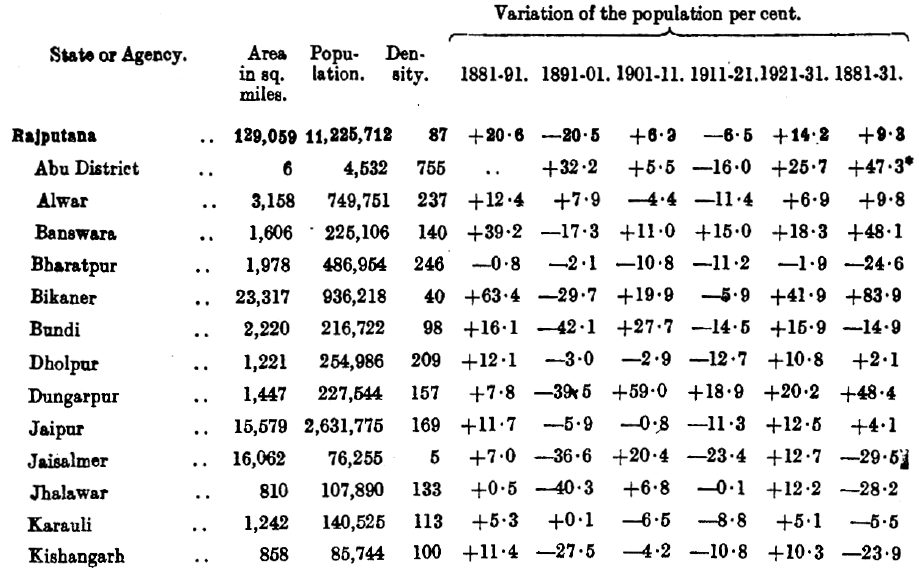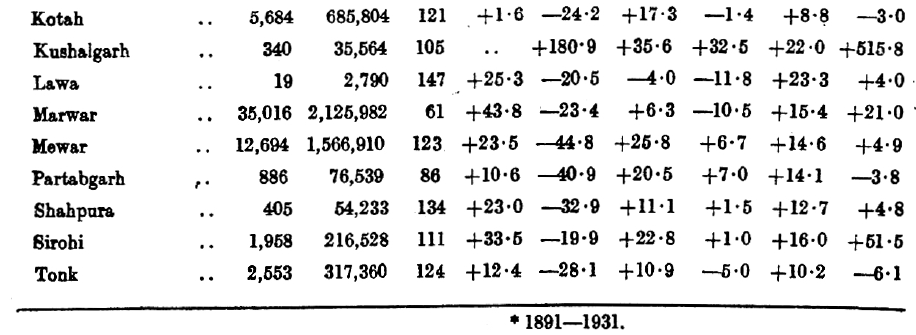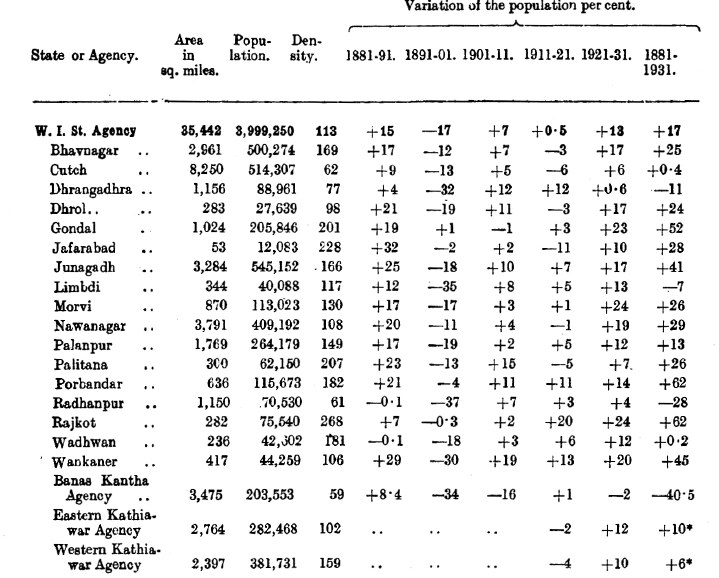Census India 1931: The Population Problem in Rajputana
This article is an extract from CENSUS OF INDIA, 1931 Report by J. H. HUTTON, C.I.E., D.Sc., F.A.S.B., Corresponding Member of the Anthropologische Gesselschaft of Vienna. Delhi: Manager of Publications 1933 (Hutton was the Census Commissioner for India) Indpaedia is an archive. It neither agrees nor disagrees |
The Population Problem in Rajputana
The Rajputana Agency comprises 19 States, 1 Chiefship and 1 Estate grouped together for the purpose of their political relations with the Government of India,which are conducted through the Agent to the Governor-General in Rajputana. It includes also a small area of 6 square miles which is leased from the Sirohi State and is therefore at present under British administration forming the Abu district. The total area of the Agency is 129,059 square miles with a total population of 11,225,712 and a mean density of 87 persons per square mile. That is to say, it is about the same size as Norway with 4 times the population, or considerably larger than the United Kingdom but with one quarter of its population. Density varies very greatly, being 5 only in Jaisalmer and 246 per square mile in Bharatpur State.
In the dry western part of the Agency the rainfall is little over 10 inches, whereas in the eastern part it is three times as much. The conditions of the decade have been good and the population has increased by14 . 2% since 1921 though this represents an increase of little more than one million on the 1881 figure and the 1931 total is actually less than that returned in 1891, though in that census a considerable number of Bhils were estimated instead of enumerated as in all cases on this occasion. The biggest increase is that of 41.9% in Bikaner State, mostly on account of irrigation and immigration. Bharatpur (-1.9%) is the only State which has actually suffered a loss of population since 1921.
Through o t Rajputan a there was a general absence of scarcit and epidemic disease throughout the decade and although the prices of grain ruled high the growth of population does not seem to have been adversely affected.
The high prices were in some States dealt with by the prohibition of exports and in others by the imposition of a tax on imported food stuffs. Wages were high, particularly in the case of the industrial population.
The Western India States Agency, about the size of Hungary with half the population, was constituted as a separate unit in 1924 before which its census returns were incorporated with those of Bombay, with which province its economic conditions have been comparable throughout the decade. Its area is 35,442 sq. miles and its population 3,999,250 with a mean density of 113 per sq. mile. It includes the civil stations ,of Rajkot and Wadhwan under the administra t i v e control of the Agent to the Governor-Gen - eral and 202 States and estates, of which 85 have their own rights of jurisdiction, while the others are grouped in thanas each under a thanadar. Of the 85 jurisdictional States 17 are salute States varying greatly in size from Cutch with an area of 8,250 sq. miles to Jafarabad with only 53, while the smallest of the non-jurisdictional estates is only one-third of a square mile in area and has a population of less than 200.
The rainfall comes late in the monsoon and varies from moderately good to scanty and deficient, and density therefore varies accordingly from 268 in Rajkot to 59 in the Banas Kantha Agency where it is awonder " that so many persons can find a livelihood in so little favoured a terrain" .
On this occasion separate figures have been compiled for 43 units, but complete data for all details for fifty years has proved impossible to obtain and even for some sub-agency groups the changes could not be filled in back to 1881. In the whole Agency there are only 66 towns, 11 of which are in Bhavnagar State ; Bhavnagar itself and Jamnagar in Nawanagar are the only two towns of over 50,000 inhabitants and there are only ten others of over 20,000, is so that it is clear that the Agency, though essentially rural and agricultural, is less so than those of Central India and Rajputana ; and so much of its population is located in towns that its degree of urbanization is just about the same as that of Bombay Presidency.


